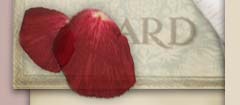Home > Statistics > Priority Passage System
When DND took over the problem of Dependents' transportation in the spring of 1944, it was found necessary to amplify a priority system started by the westbound priority committee, as westbound passages were at a premium, not only for dependents but for Canadian citizens in the UK. The basis of the system was the need of the dependent to come to Canada.
Below is the letter and number system used to prioritize servicemens' dependents. Presumably, an applicant with five of the six letters could accumulate enough points to rise to the top of the list for priority passage. Interestingly, wives of Normal Soldiers (N7) and Soldiers Returned to Canada (R5) did not warrant special consideration.
D1 - Discharged Soldier
H2 - Hospitalized in Canada
P3 - Pregnancy of Wife
X4 - Prisoners of War
R5 - Soldier returned to Canada
C6 - Cases of extreme hardship (including widows)
N7 - Normal (Soldier still overseas)
1. D.H.P.X.C.
2. D.H.P.X.
3. D.H.P.C.
4. D.H.P.
5. D.H.X.C.
6. D.H.X.
7. D.H.C.
8. D.H. |
9. D.P.X.C.
10. D.P.X.
11. D.P.C.
12. D.P.
13. D.X.C.
14. C.X.
15. D.C.
16. D. |
Source: History of Directorate of Repatriation, Department of National Defense, p. 33. February, 1947.
|



